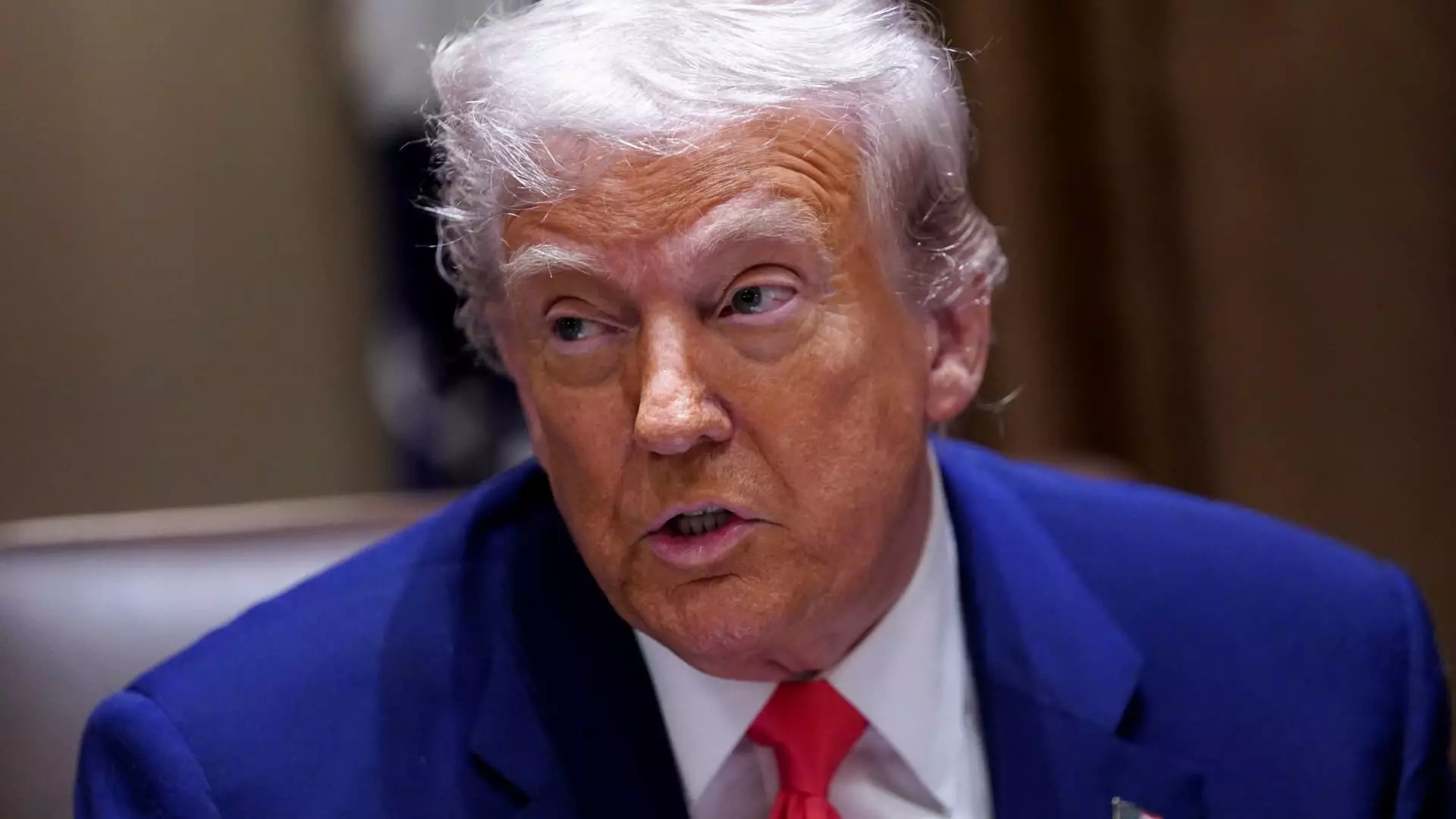The decision by President Donald Trump to impose a staggering 145% tariff on imports from China marks a significant turning point in U.S. economic policy, one that could irrevocably alter our global trade relationships. As economist Erica York of the Tax Foundation noted, tariffs at this scale could effectively sever trade ties between the United States and its second-largest trading partner. While proponents of such policies might argue that they serve to protect American jobs and industries, the long-term ramifications raise serious concerns that cannot be overlooked.
The ramifications of such tariffs are multifaceted. They threaten to elevate consumer prices, as companies are compelled to absorb—or pass on to consumers—the cost increases driven by these tariffs. The illusion of economic protectionism can quickly transform into economic isolationism, stunting growth and jeopardizing the livelihoods of everyday Americans who rely on affordable goods and international commerce. With Trump’s tariffs set to create the highest average tariff rates seen since the 1940s, the prospect of a self-inflicted economic wound becomes all too real.
Market Reactions and Economic Indicators
The immediate effects of these tariffs are starkly visible in the market’s reactions. Following the announcement of the tariff increase, the stock market began to shed its considerable gains, a clear indicator of investor anxiety about the potential consequences of heightened trade tensions. The economic uncertainty that follows such a dramatic policy shift can lead to decreased investment and reduced consumer confidence, which in turn can stifle economic growth.
Worryingly, the tariffs are not merely economic strategy; they are a tool of economic warfare. China has already retaliated with its own levies, raising them from 34% to 84% on U.S. imports—actions that signal readiness for an extended trade conflict. This tit-for-tat escalation not only affects the economies of both nations but also reverberates through global markets, contributing to increased volatility and uncertainty that can stifle international investment and collaboration.
The Misguided Attempt to Boost Revenue
Despite the negative economic forecasts, Trump’s tariffs have been cloaked in the guise of revenue generation, with projections estimating a boost of $171.6 billion in federal revenue. However, framing the tariffs as a straightforward tax increase glosses over the larger, detrimental consequences for American consumers and businesses. The last time a revenue boost was touted in such a way, it came at the expense of long-term economic health, spotlighting a fundamental misunderstanding of the interconnectedness of modern economies.
Restructuring trade through exorbitant tariffs might offer a fleeting sense of economic security, but it is ultimately an unsustainable approach. Isolationist policy-making fails to grasp the complexities of a globalized economy where interdependence encourages innovation and prosperity. The real cost of such protectionist measures could far exceed the immediate revenue gains, manifesting in lost jobs, higher prices, and diminished international standing.
In the end, it’s difficult to justify policies that not only hinder free trade but could also serve as a historical lesson in the failures of protectionism. As we navigate this turbulent economic landscape, a reassessment of our trade policies, aligned more with cooperative engagement than with isolationist stances, seems imperative for a healthy economic future.

